Ukrainian Drones Attacked Russian Spies in Moscow—and 'There Will Be More of It'
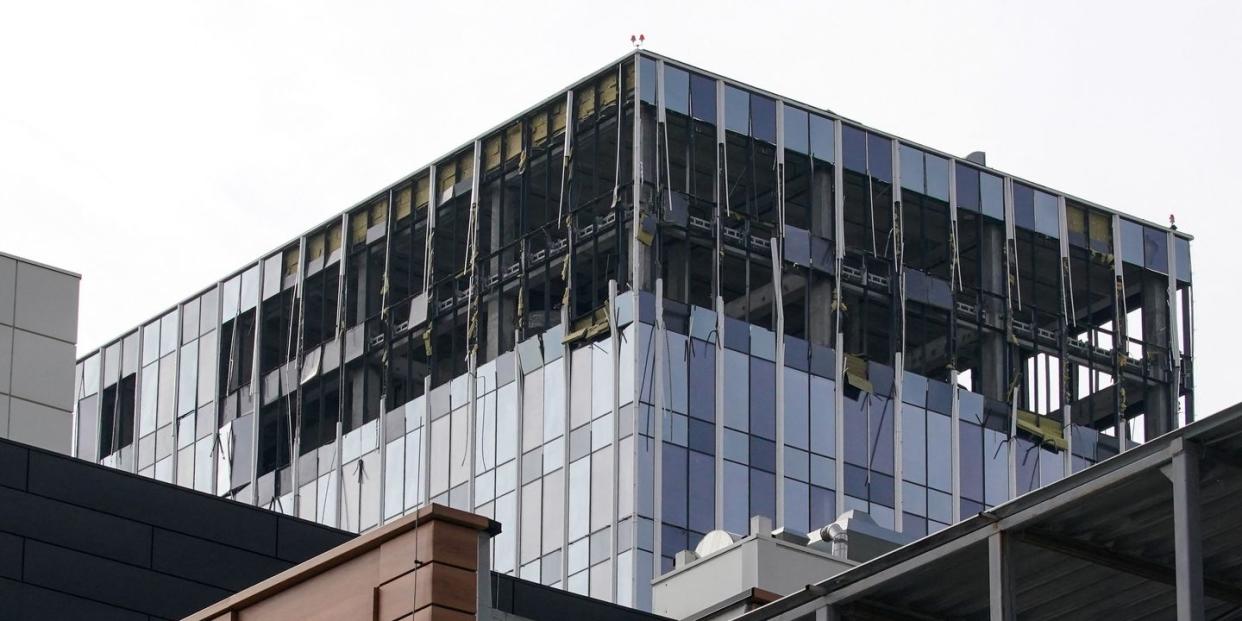
At roughly 4 a.m. on July 24, residents of Moscow heard a loud buzz as two relatively large fixed-wing drones darted toward the high-rises at the city’s heart. There followed two blasts as they struck buildings near the Russian military’s top command-and-control center.
Russian officials say two UAVs targeted Moscow this morning. One apparently damaged a Russian military building on Komsomolsky prospekt, which is near the MoD’s NTsUO building. https://t.co/r90crXGfmihttps://t.co/GUIlpDTlwRhttps://t.co/GrcIbjyEHAhttps://t.co/Ld4JcsAN85 pic.twitter.com/11AG1FAKij
— Rob Lee (@RALee85) July 24, 2023
The resulting debris and shrapnel also damaged some street level stores.
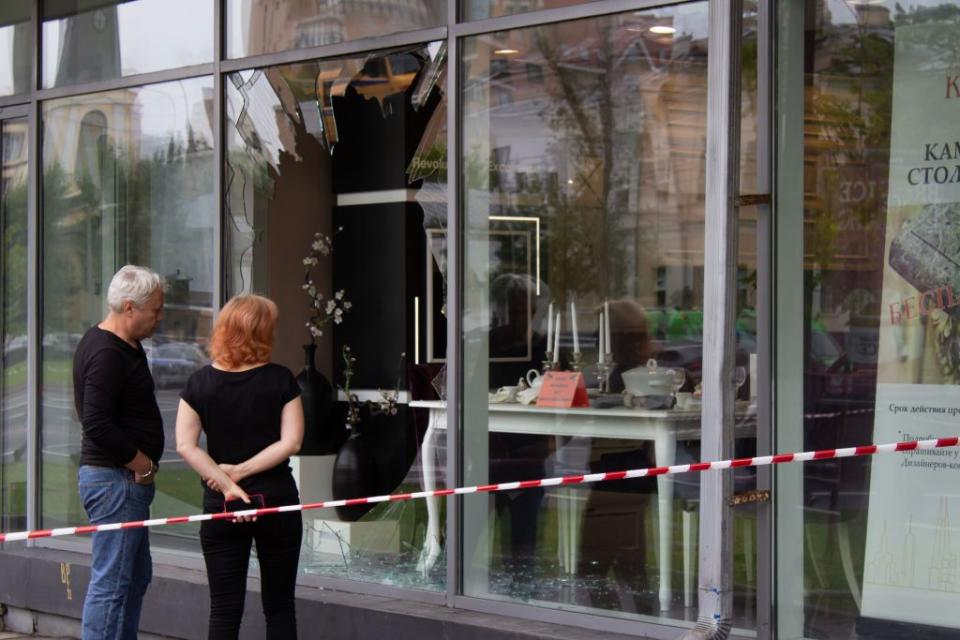
Russia claimed that the drones were forced down using electronic warfare assets which, in theory, could have jammed the drone’s satellite navigation and/or remote control command links, causing them to crash short of target.
While there are, inevitably, theories that third parties like Russian ultra-nationalists might be responsible for the attack, an anonymous source within Ukraine’s GUR defense intelligence agency—and Ukrainian digital transformation minister Mykhailo Fedorov—weren’t shy about taking credit. After all, Ukrainian prime minister Zelensky had vowed retaliation after a deadly Russian missile strike on the Black Sea port of Odesa devastated a UNESCO world heritage site historic cathedral just a day before.
Referring to the latest Moscow drone attack, Fedorov said, “Whatever happens there, there will be more of it.” Fedorov has played a major role in organizing civilian donations and supporting local companies to build a huge ‘Army of Drones’ acquired separately from the regular military procurement system.
Russia also claimed that morning that it had completely destroyed the 17 Ukrainian drones that launched from Kryvy Rih, and that the country had approached Crimea using air defense and (primarily) electronic warfare. However, Russian sources admit that at least one drone and four British-supplied Storm Shadow stealth cruise missiles launched from Ukraine’s Soviet Su-24 bombers apparently succeeded in hitting a Russian ammunition depot near an airbase at Dzhankoi. This depot may have stored Oniks missiles used by the Russian Bastion coastal artillery systems attacking Odesa.
Three more kamikaze drones swooped down on Moscow early in the morning of Sunday, July 30. One was shot down over Odintsovo southwest of the city center. The other two struck skyscrapers hosting Russian government agencies (including the Ministry of Digital Development, Communications, and Mass Media), destroying offices inside, scattering documents into the streets and injuring a security guard.
Footage of the Ukrainian drone attack on the OKO II business complex in Moscow-City this morning. pic.twitter.com/Tkkvir0wAd
— OSINTtechnical (@Osinttechnical) July 30, 2023
Ukrainian president Volodymyr Zelensky subsequently remarked: “Ukraine is getting stronger, and the war is gradually returning to Russia’s territory, to its symbolic centers and military bases. This is inevitable, natural, and absolutely fair.”
What was Ukraine targeting in Moscow?
At first glance, it might seem that Ukraine’s attacks on Moscow—which have yet to kill anyone—are replicating on a drastically smaller scale the kind of indiscriminate, low-accuracy missiles and drones that Russia has been hurling in large quantities at Ukrainian city centers. Rather than achieving specific military effects, these strikes seek to terrorize and demoralize civilians and destroy infrastructure to damage Ukraine’s economy and compel Ukraine to commit air defenses to the home front.
However, looking at where the drones landed, the July 24 attack does appear to have had a precise target in mind—either Russia’s top military command and control center, or a military complex hosting GRU military intelligence facilities staffed by elite spies and hackers.
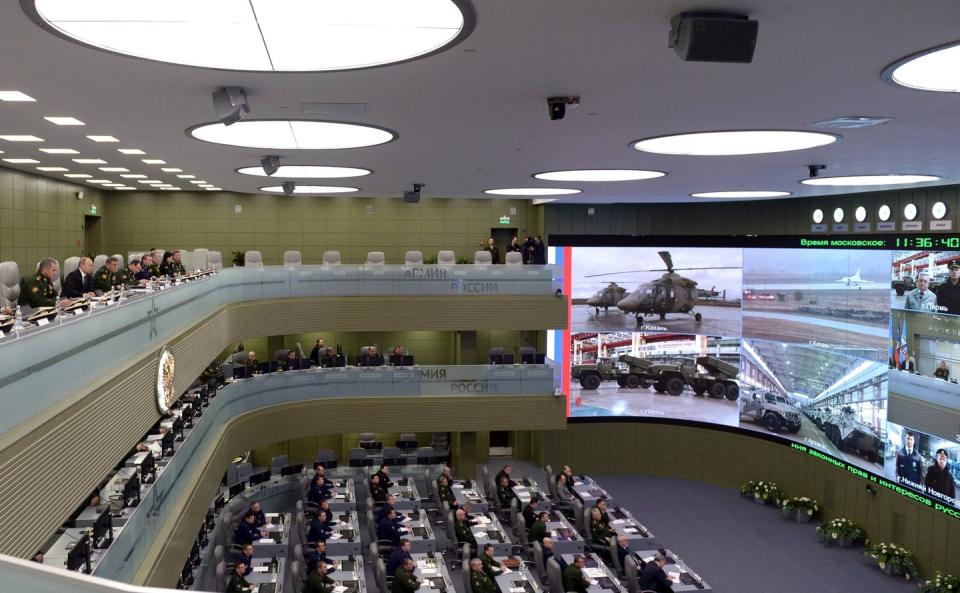
In particular, the building hit on 17-18 Komsomolsky Ave. is adjacent to housing for the GRU ‘Fancy Bear’ Unit 26165, personnel from which were indicted in absentia by the FBI in 2018 for their malicious cyber activities.
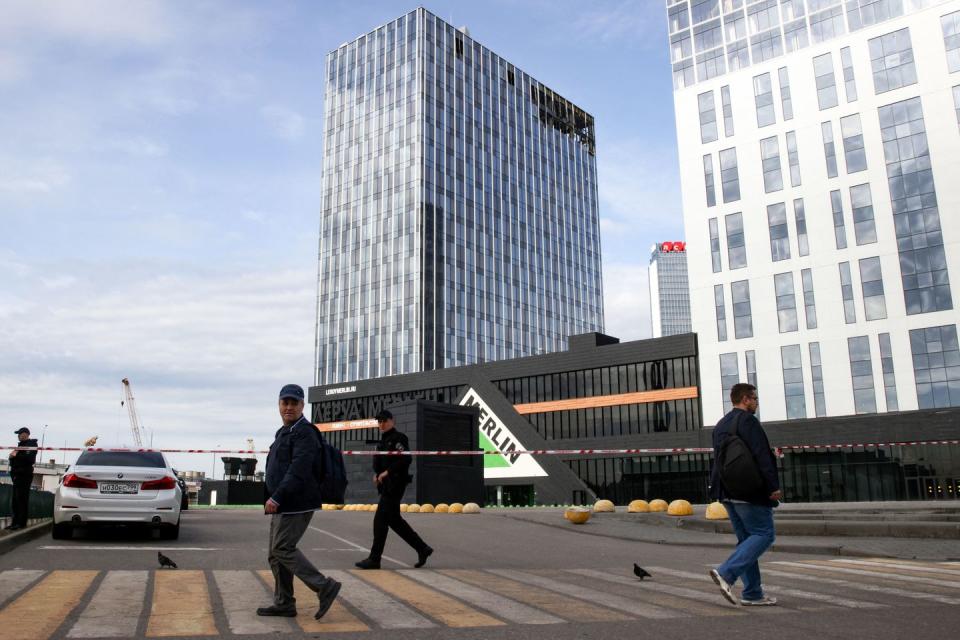
Fancy Bear employees specialize in ‘spear phishing’ attacks—used to infect computers with malware—and devise ‘zero day’ hacking exploits to disseminate false information or selectively embarrass persons or parties deemed inimical to the Kremlin.
Its long list of misdeeds includes attempting to influence elections in the France, Germany, and the United States in favor of more Russia-friendly parties, devising a compromised app used by Ukrainian artillery units that exposed their positions, and executing attacks on the Olympic committee and anti-doping agencies in response to the exposure of Russia’s systematic state-doping program.
Also nearby are a military university and military band house, as well as housing for GUR ‘illegal’ agents who enter foreign countries entirely clandestinely, rather than under a ‘legal’ diplomatic cover.
A few hundred meters further away from that building is Russia’s National Defense Management Center (also known as NTsUO), the supreme command-and-control facility for Russia’s defense ministry and home to Russia’s NDMC supercomputer.
Geolocation: pic.twitter.com/ihJL1Ka0Zh
— Mark Krutov (@kromark) July 24, 2023
A Pantsir-S1 short range air defense was in fact deployed on NTsUO’s roof, yet seemingly failed to prevent the nearby UAV strike.
There are two fairly likely scenarios for exactly went down. On one hand, the drones could have been deliberately aimed at the GRU complex. On the other, they were targeting the NTsUO command center, but Russian jamming or internal shortcomings caused the drones to fall short and hit the GRU complex instead.
A prior attack—allegedly carried out by eight Ukrainian drones in May—appears to have targeted the homes of Russian intelligence personnel.
What was Ukraine trying to accomplish?
On one level, it seems likely that the strike was intended to serve as symbolic retaliation for Russia’s increasingly brutal missile attacks on the port of Odesa. It may also have been intended to harm personnel of either the GRU or Russian defense ministry, whom would have been legal military targets.
But more broadly, the primary intent was undoubtedly to influence Russian elites—especially those in the military and intelligence services—with a negative perception of Putin’s war by highlighting the fact that Ukraine’s ability to hit targets in Russia has only improved despite the invasion, and that the Russian military does not have the ability to completely defeat such attacks.
Of course, strategic attacks—particularly if indiscriminately destructive—can (and have, often) backfire by hardening public opinion against the attacker. Should Ukraine’s strikes cause heavy civilian casualties, Ukraine may risk losing critical international support. Thus, Ukrainian strikes on targets in Russia must strive for a greater degree of precision than Russia is seeking in its attack on Ukrainian cities.
How did Ukraine do it?
Ukraine has already used a variety of larger, long-range drones for operations over Russian soil, including its indigenous Ukrjet UJ-22 fixed-wing drone and imported Chinese Mugin tilt-rotor drones for deeper attacks on Russian soil. Only such larger, pricier drones have the range to traverse the minimum-250-to-300 miles from Ukraine’s northernmost border to Moscow.
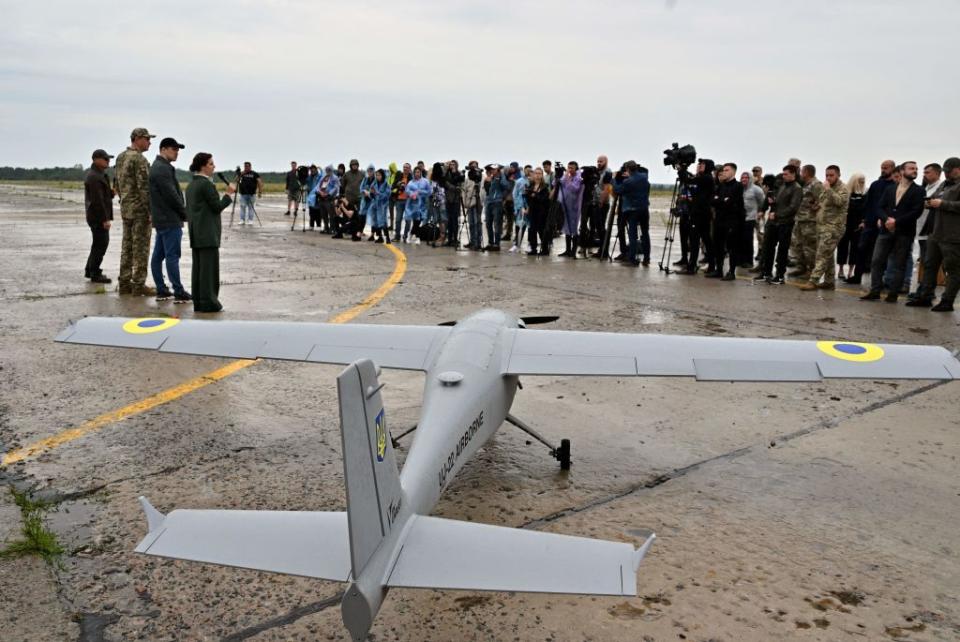
Moreover, Ukrainian officials have repeatedly indicated that they were developing new long-range kamikaze systems that could enter service in numbers in 2023, mirroring Russia’s large-scale adoption of cheap Iranian-built Shahed kamikaze drones for strategic attacks that began in the fall of 2022.
Several Western and Russian sources assert that this latest attack was undertaken by Ukrainian-developed Bober (“Beaver”) drones, which have been used in some of Ukraine’s earlier attacks on Moscow. That ID seems debatable, however, as the drones seen in this attack seem to have flatter and more elongated fuselages than the elliptical pods that are characteristic of the Beaver.
The Drone used against Moscow today was almost 100% a Ukrainian “Beaver” Long-Range Attack Drone; this was not a “False Flag” like I’m sure many Officials and Sources will claim. pic.twitter.com/gljgQSZdK8
— OSINTdefender (@sentdefender) July 24, 2023
Beaver began development in 2022, with the first five prototypes funded in part by the equivalent of $540,000 USD in civilian donations raised by social media influencer Ihor Lachen. Lachen was photographed alongside Major General Budanov, commander of the GUR military intelligence service.
Distinguishing characteristics include its second set of forward wings (or ‘canards’), its pusher propeller engine, and its tricycle landing gear. Reportedly, the drone weighs 300 pounds, has a maximum speed of 120 miles per hour, and has a claimed maximum range of 620 miles.
The Beaver’s warhead is said to be in the range of 22-44 pounds, though a Russian source claims that wreckages reveal the warhead in question to be smaller—supposedly, it’s a Soviet K3-6 armor-piercing shaped charge weighing just 11 pounds. This is far lighter than is ideal for causing major damage to area-targets/buildings. However, it seems likely that Beaver could mount heavier payloads if necessary, or multiple K3-6s.
Like the Shahed, the Beaver can fly to attack a non-moving target without relying on remote control from an operator (if it supports remote control at all). Russia’s extensive use of satellite jamming/spoofing in the Moscow area, however, likely means that any Ukrainian platforms intended for such distant strikes require a robust inertial navigation system to take over when satellite navigation ceases to be available and accurate.
You Might Also Like


